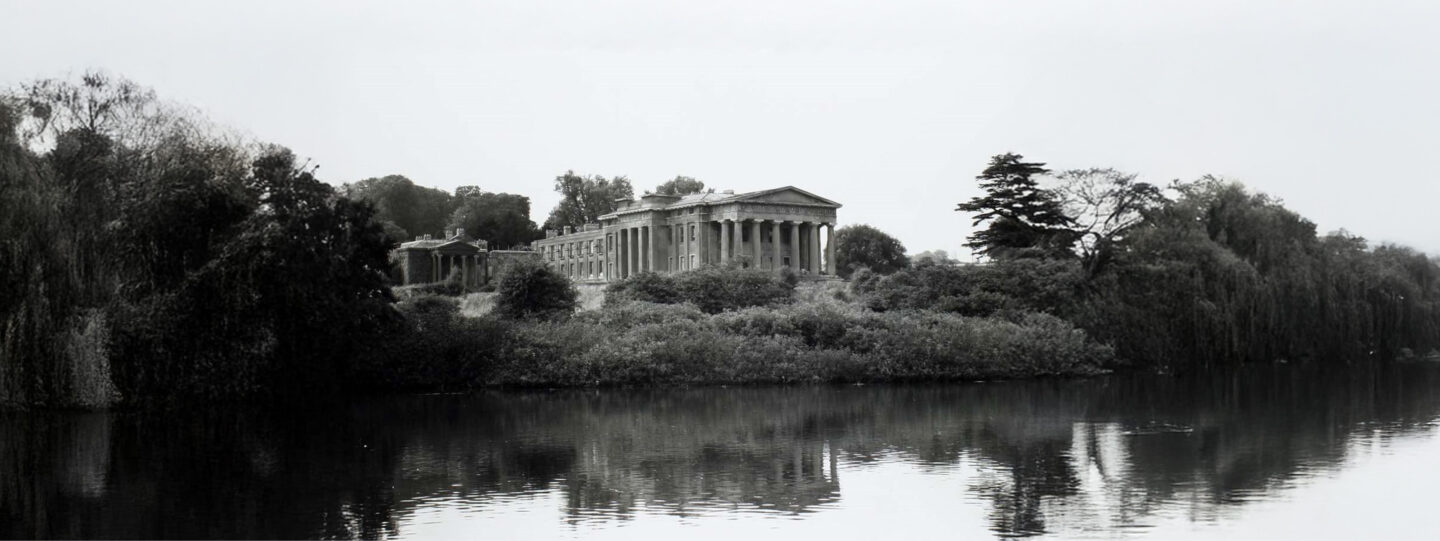
The Grange History
The Grange, one of the most celebrated neo-classical mansions in Britain, is located in Hampshire, seven miles from Winchester, and owned by the family of John Baring, Lord Ashburton. English Heritage has a guardianship deed on the Grade I-listed building.
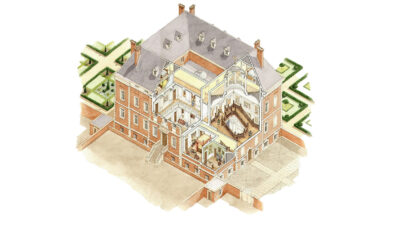
1662
Robert Henley, a young lawyer and courtier to Charles II, bought the estate and its modest late 16th century house known as The Grange. In 1665 he commissioned William Samwell, one of the King’s architects, to design an impressive five‐storey brick residence, based on the new French fashions and with sumptuous interiors, to replace the earlier house. A hundred years later, Henley’s grandson Sir Robert, who as Earl of Northington was Lord Chancellor of England for George III, employed the great Robert Adam to design a new kitchen block, and also laid out the naturalistic landscape that still exists with its lake, bridge, and castellated folly.
1787
The Earl’s daughters sold the estate, after the death of their only brother the 2nd Earl, to Henry Drummond, head of a banking family.
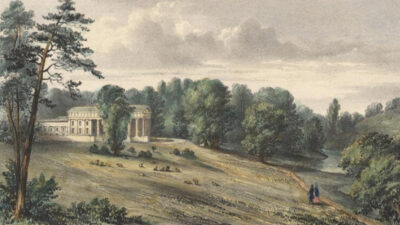
1795
The young Henry Drummond inherited at the age of 9; The Grange was leased as a hunting lodge with over 400 deer in the park to George, Prince of Wales, later The Prince Regent.

1804
Henry Drummond, one of England’s great eccentrics, commissioned William Wilkins, later the architect of the National Gallery, Trafalgar Square, to transform this large 17th century house into an enormous and correct Greek temple, to upstage his neighbour Sir Francis Baring, head of the well‐known banking family and owner of the nearby Stratton Park. The massive Doric portico is a copy of the Theseion in Athens, and the side elevations are versions of the Choragic Monument of Thrasyllus. This was the first Greek Revival house in Europe in the form of a classical temple.
The transformation was largely external – the old house, the structure of which still of course survives, was literally wrapped in Roman cement, a very hard render made from ground flint. This is when the podium visible today was built, obscuring the basement rooms used by the servants; the windows of the servants’ rooms on the uppermost storey were covered by the entablature of the temple, depriving them of natural light and air for architectural perfection! The family rooms at podium level became the main reception rooms, the main Drawing Room was created, the Hall remodelled, and the former State rooms on the piano nobile became bedrooms for the family and their guests. At the time it was said that, at huge expense, he had “turned a very good family house into a very bad one”!
1817
Before the works were finished, Drummond became bored with the whole exercise and sold the estate to Alexander Baring, son of Sir Francis Baring. Drummond moved to Albury Park, Surrey, became an MP, and founded the Catholic Apostolic Church.
1819
Baring commissioned Robert Smirke, a pupil of George Dance and architect of the British Museum, to build a single storey wing to the west, on the site of Adam’s kitchen, but this proved still to be unsatisfactory.
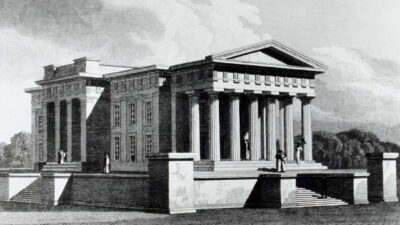
1823
The young architect Charles Robert Cockerell was invited to further extend the house to the west in the form of an L- shaped wing. Cockerell enthused ecstatically about the true Grecian qualities of The Grange and its setting, saying “there is nothing finer … [and] nothing like it on this side of Arcadia”. His additions included an elegant Dining Room facing north [now demolished], and an Orangery in the form of an Ionic temple at the southwest ‐ this was adapted to form the opera house in 1998.
This Orangery made advanced use of iron and glass with rainwater collected from the roof and channelled through its internal columns into a reservoir below, from where the delicate plants within, and the occupants of the house, were supplied with water. Baring, a leading member of the Royal Horticultural Society, also laid out the gardens in Italianate style and planted 30,000 trees in the park, and the severe Greek temple resting in its gentle Hampshire countryside became one of the most romantic sights in the country. An important politician, Baring was created Lord Ashburton in 1835 by William IV, who could have visited the house when his older brother the Prince Regent occupied it forty years previously.

1868-71
An unknown local architect John Cox further extended the house and modernised the interiors for Alexander Baring, the 4th Lord Ashburton. This was the heyday of the house, with a staff of more than a hundred to look after the family, who threw exuberant house parties attended by Thomas Carlyle, Alfred Lord Tennyson and other society figures. By this time, the Barings were one of the most influential families in England.
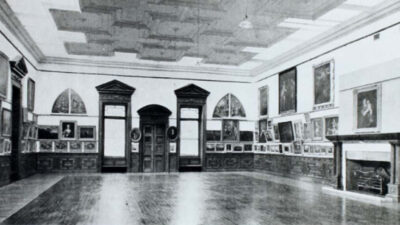
1890
Francis Baring, the 5th Lord Ashburton, sold Bath House in Piccadilly and his other estates so, to accommodate his paintings, converted the Orangery into a Picture Gallery that also doubled as a fashionable Ballroom. About 1900 he reopened the windows of the servants’ attic rooms to return their light and air.
1934
The Grange and 600 acres of the park were sold to Charles Wallach, an American whose fortune was from the medicinal use of paraffin and other petroleum by-‐products. He further modernised the house, filling it with his fine painting and furniture, while the rest of the estate remained in the ownership of the Baring family.
1944
24 March Churchill and Eisenhower met in the Picture Gallery of The Grange to discuss the invasion of Europe. After the war ended, the widowed Charles Wallach moved into the Bachelors’ Wing and abandoned the main house, which gradually fell into complete decay.
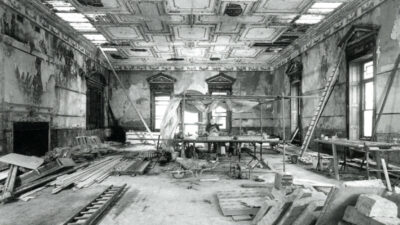
1964
Charles Wallach died, and 2 years later John Baring, now 7th Lord Ashburton, bought the ruined house and 600-acre park. In 1972 the fate of the house attracted much public comment, so in 1975 the building was placed into the guardianship of the Department of the Environment [then English Heritage, now Historic England] who restored it as a roofed ruin in 1980‐82.
1998
Grange Park Opera staged its first summer festival at The Grange.
2002
A new theatre was built inside the old Orangery / Picture Gallery by Studio E Architects, advised by John Redmill as Historic Buildings consultant; this won the RIBA Award 2004, RIBA Conservation Commendation 2004, Georgian Group Award for Best New Building in a Georgian Context 2004 and was shortlisted for the Crown Estate Conservation Award 2004.
2016
Grange Park Opera staged its last festival at The Grange.

2017
The Grange Festival staged its first festival.

Stay connected
Join the Grange Festival community and stay connected to a world of enchanting performances and exclusive events.